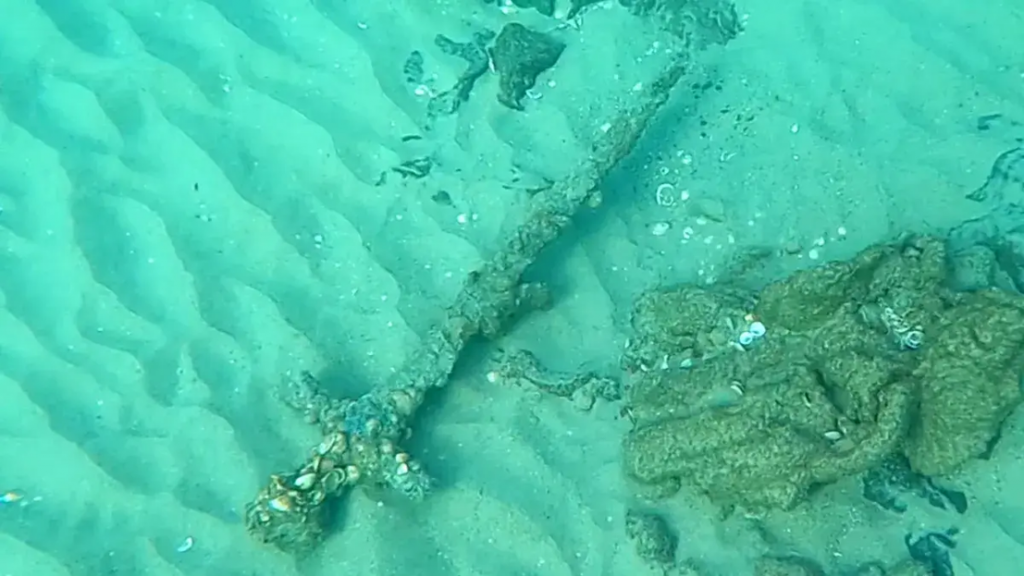Archaeologists have made a fascinating discovery in the depths of the Mediterranean Sea near Israel: a sword adorned with seashells and encrusted in sand. Through careful examination, experts believe that a Crusader likely dropped the Newe-Yam sword weapon during a battle between 800 and 900 years ago.
In 2021, divers stumbled upon the medieval sword during an underwater expedition in the Mediterranean Sea. The weapon’s blade, measuring nearly 3 feet long and 1.8 inches in width, was heavily coated in concretions, initially limiting the archaeologists’ ability to decipher its secrets. However, the concretions that encased the sword were vital in preserving it.
With the aid of X-rays, researchers could penetrate the layers of marine concretion and discern the original outline of the sword. They observed that the blade was bent, leading them to conclude that the weapon was likely damaged during the Crusades. Swords damaged in battle could be straightened later, but the Newe-Yam sword remained bent without a sheath, known as a scabbard, suggesting that it was lost during a naval battle or combat on land.
The Crusades were a series of religious wars between Christians and Muslims from A.D. 1095 to 1291. According to Jacob Sharvit, co-author of the study and director of the marine archaeology unit of the Israel Antiquities Authority (IAA), the sword was probably used by a Crusader warrior who settled in the region after the First Crusade and participated in the establishment of the Kingdom of Jerusalem in 1099.
The discovery of this sword provides valuable insights into the weaponry used during this tumultuous period. Blades were considered prized possessions of knights and warriors, made from quality iron and requiring extensive training to wield effectively. These weapons were expensive, thus mainly used by the nobility and professional soldiers in face-to-face combat.
Notably, the region has yielded few complete swords from this historical period, with the majority found in the sea. Swords were not typically discarded, but their metal was often recycled for other purposes once they were no longer in use.
While scanning the seafloor around the sword’s location did not reveal any human remains, researchers acknowledge that the warrior may still lie undiscovered in the depths, awaiting a day when the shifting sands show more of history’s secrets.
The discovery of the Newe-Yam sword provides a tangible link to the past, giving us a glimpse of the weapons used during the Crusades and the courage of those who wielded them in battle. As archaeologists continue exploring the depths of the Mediterranean Sea, more mysteries from this bygone era may come to light.

